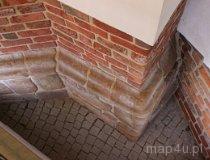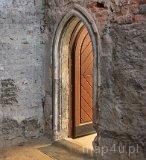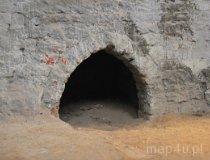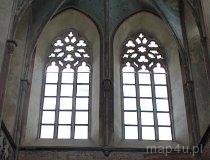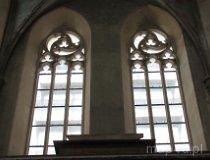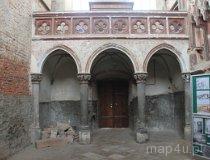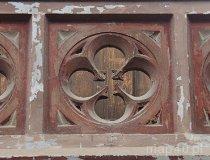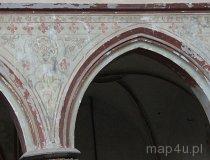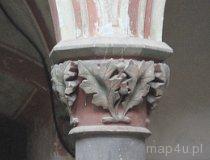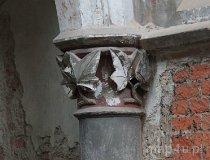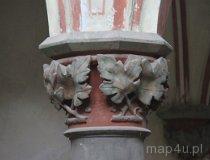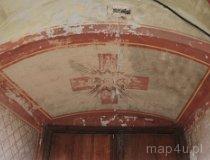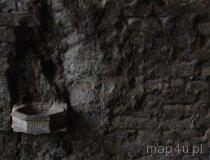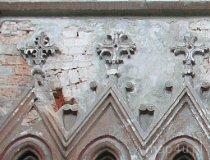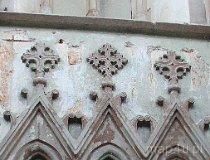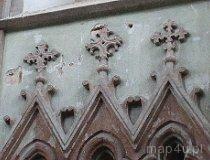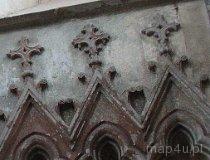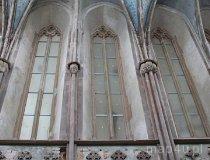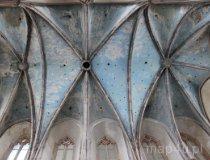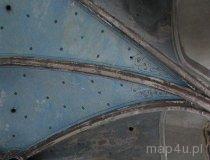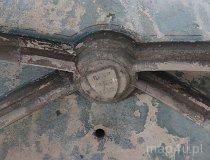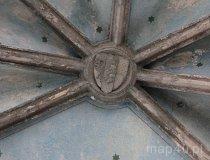Piast Castle in Racibórz - Station 03 – The Chapel
Description
The visiting of the interior of the castle starts from the chapel of St. Thomas Becket. He lived in the 12th century and was the Archbishop of Canterbury, because of that often called St. Thomas Kantuaryjski. He was murdered by four knights by command of King Henry II. He was canonized for his martyrdom in 1173. Now he is the patron of England (together with St. Jerzy) and all the clergy. The chapel dedicated to him is unique among other reasons because nowadays in Poland choosing a foreign saint patron for a temple is rare.
The castle chapel is a pearl among Upper Silesian Gothic; it is also called, for the similarity with the famous Parisian chapel, Silesian Saint-Chapelle. Originally built in pure Gothic style, later was enriched by elements of Baroque and neoGothic.
It was built around 1290 by the Duke Przemysł. The choice of such a patron was made to commemorate the dispute between the bishop of Wrocław Thomas II and the Duke Henryk IV the Probus, of which the final part, described by Jan Długosz, occurred in Raciborz. The castle, where the bishop was hidden, was besieged by the Probus. St. Thomas Becket and the bishop Thomas II were connected by the resistance they made against a secular ruler to defend the Church rights. Eventually, it finished with reconciliation and the bishop, grateful for that, established the collegiate next to the chapel. The canons lived here until 1416.
Throughout its history, the chapel was repeatedly destroyed by fire. However, during the renovations of the castle buildings, it was also restored. Last important restoration took place after the fire of the whole castle in 1858.
As mentioned, despite the fact that World War II spared the chapel, its interior from the 50s of the 20th century has been gradually devastated. Currently, there is work on restoring its valuable furniture.
The main entrance to the interior is from the courtyard, but it is used only during important occasions. The guide leads the visitors by the side entrance, through the sacristy (photo 10.03.002), and the way to it is through the gate. Before we move inside, take a look at the foundations of the chapel exposed from the inner side (Photo 10.03.001). Please, note how much lower than today the ground was in the 12th century. After entering the chapel the attention is caught by a mysterious hole on the right side (photo 10.03.003). It is a passage, and the difference in its height is a further evidence of how much the level of the floor raised. This entrance is located in the preserved part of the ramparts and led once on the porch of the guard. On the eastern wall years before was placed the main altar. The summit of this wall is finished with two symmetrical windows with stone decorations called tracery (photo 10.03.004). Similar windows, but with the other traceries, are visible on the opposite side, above the main entrance (photo 10.03.005). Close to it catch our attention also a quite huge choir, based on four columns (photo 10.03.006). It is surmounted by a stone balustrade with decorative tracery (photo 10.03.007). Painting on the gallery presents floral motifs and geometric patterns (photo 10.03.008). Each column sustaining the balcony is topped by a head with decorative leaves (photo 10.03.009-10.03.011). On the vault of the porch is a polychrome presenting a geometric pattern, referring to the symbol of the Holy Spirit (photo 10.03.012). From the side, next to the door you can see the stone stoup (photo 10.03.013) with a floral pattern. Impressive are the canons sedilia in the form of four triforia (photo 10.03.0014), narrow niches where sat dignitaries. Currently, these sedilia are located halfway up the wall, which may be surprising not knowing that originally the chapel was divided into two floors. In later centuries in the sedilia were placed statues of the twelve apostles. As mentioned, now they are in the warehouse at the Museum of Racibórz. Each triforium is topped with three different crosses (photo 10.03.015-10.03.018). Over the sedilia the light enters into the chapel through a series of high gothic windows (photo 10.03.019). The cross-ribbed vault of the chapel also makes quite an impression on the visitors (photo 10.03.020) due to the well-preserved polichrome on it (fot.10.03.021). Golden stars on a blue background shine in it and, where the ribs connect, harmoniously writhed floral ornaments. The two keystones of vaults have also information functions. On the west one there is the date 1872 (photo 10.03.022), the year in which a renovation of the church was carried out, and on the east keystone there is the coat of arm of the princes von Ratibor (photo 10.03.023). In the middle there is a hole, which is the remnant of a chandelier, once hanging there.
We now invite you to the interior of Prince’s House.



